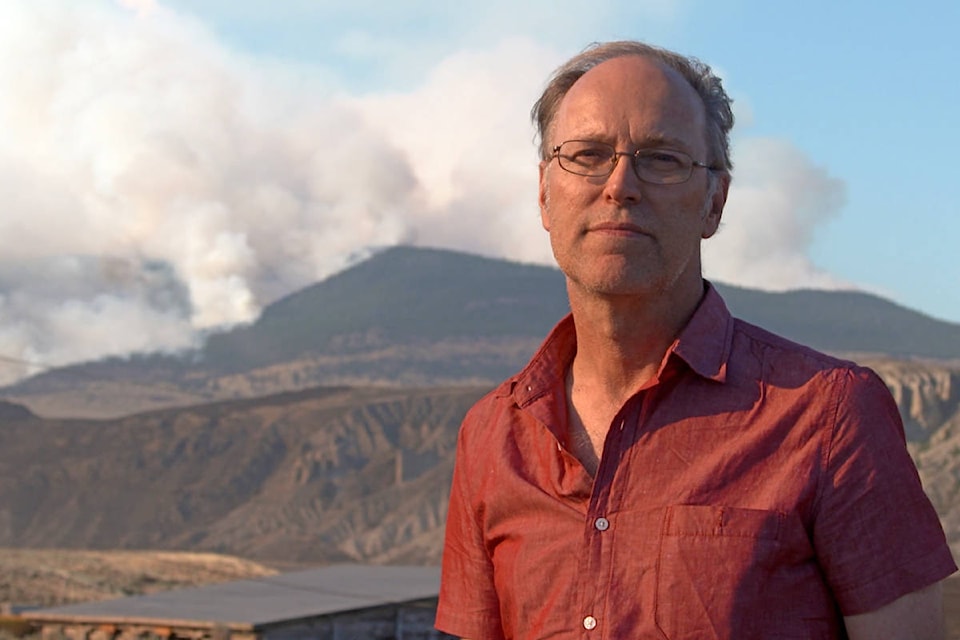“To understand fire you need three ingredients,” says University of Alberta wildfire expert Mike Flannigan.
You need the fuel, you need ignition, and, most importantly, you need weather, he says.
Flannigan is just one of the voices explaining the science behind fire on CBC’s new documentary Into the Fire, which focuses on the 2017 wildfires in British Columbia and Fort McMurray’s devastating 2016 fire.
“I’ve always been fascinated with fire because I’m scared of it,” says the documentary’s director, Leora Eisen.
At 21, she stumbled out of her apartment through the smoke in Toronto as the fire alarms went off.
“That sort of cemented my fear and fascination,” she says.
A couple of years ago, she read about how climate change was changing fire behaviour.
“I found that interesting because I’m interested in climate change issues in general and that was something I hadn’t really thought of.”
When the Fort McMurray fire happened, the Nature of Things took her up on the documentary she had been pitching for years.
“I wanted to understand what happened in Fort McMurray last year and B.C. this year. Are we just imagining it, or are fires becoming more frequent and more intense? You know what, we’re not imagining it.”
The documentary tells a number of stories and shows the science behind how wildfires work.
Over the summer, Eisen watched the Elephant Hill fire nearly double in size as she filmed.
“It was unbelievable,” she says.
“It is really interesting, because Mike is looking at this giant mushroom cloud of smoke and fire and this firestorm and he explains what is going on, how fires create their own weather and he takes you through the fire’s behaviour.”
Flannigan talks about the intersection between climate change and fires, in addition to explaining how they work.
“Unless you have an increase in precipitation with a warming climate the fuels will be drier. Dried fuels means it’s easier for fires to start and spread and we’ve just published [data] recently that suggests with the future climate, because of drier fuels and because of the weather conditions, fires are going to become more intense.
“And that may be hard to believe for folks in your areas who saw just incredibly intense fires this year, which is why I am saying this is consistent with climate change.”
Even the wet spring contributed to the worse fire conditions.
“You just need a week to 10 days of warm, dry, windy weather and you’re ready to burn. In fact the wet winter made things a little bit worse, because in your valleys where it is grass and sage and things like that, the wet winter means increased grass and vegetation growth then you get the hot dry summer and it all dies and it burns like stink because theres more of it.
“It burns more intensely and it’s difficult to put out and intensity is really important for fire management because if it gets intense then [turns into] flame, it becomes unsafe to have fire fighters on the front line when it’s that hot.”
Talking with researchers, fire experts, firefighters and even heading to the Australian outback where aboriginal populations use fire to their advantage, Eisen looks to share the science behind why things burn the way they do.
“One of the things we are trying to do is explain why wildfire behaves the way it does because even though fire is such a fundamental force of nature, even scientists will tell you there is still so much we don’t understand about it.”
In one portion of the documentary, Eisen talks with fire safety consultant Alan Westhaver about why some residences in Fort McMurray burned, while the next door neighbour’s survived. Westhaver also provides simple tips on how to fireproof your house.
In another portion, she goes to a forest lab in Montana where researchers are trying to understand the physics of how fire spreads by simulating fire in the lab.
“We filmed a number of experiments that explain why does fire spread horizontally if hot air rises, why does it go faster uphill, why do pine needles burn when they are alive because they contain moisture,” says Eisen.
“We wanted to look at some of the counter intuitive or surprising features of fire.”
She also films during a training session with firefighters who fight residential fires, who say that those fires are getting tougher to fight.
Eisen hopes that by the end of the documentary, viewers will have a better understanding of fire.
“I hope that people take away that we are not helpless victims that by understanding the science and urging governments and your local community to take steps to mitigate fire risk we can play an active role in protecting ourselves.”
The documentary will premier on CBC’s Nature of Things on Sunday, Nov. 5 at 8 p.m.
“We use fire all the time, many of us are scared of fire but we have to learn to live with it because the problem is going to increase.”
